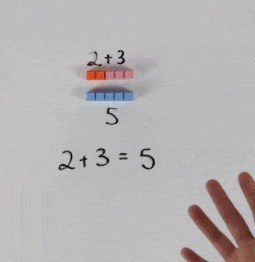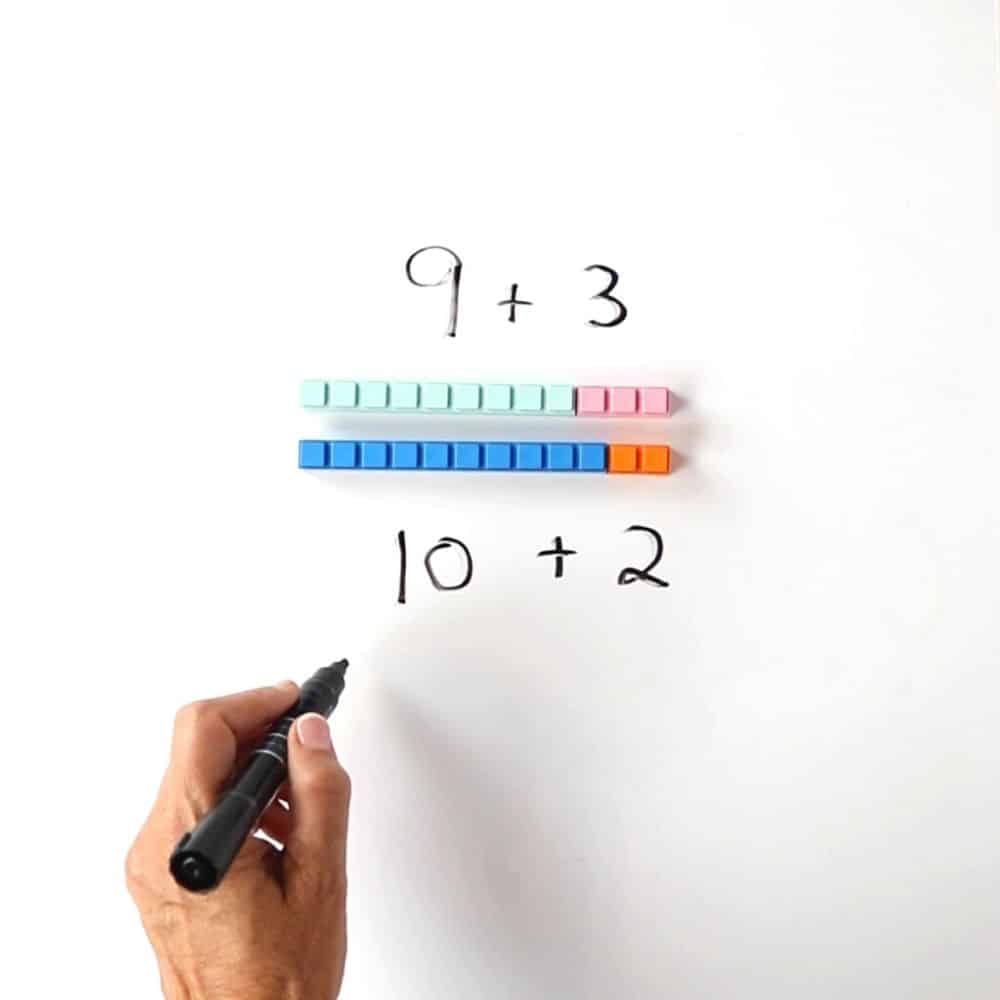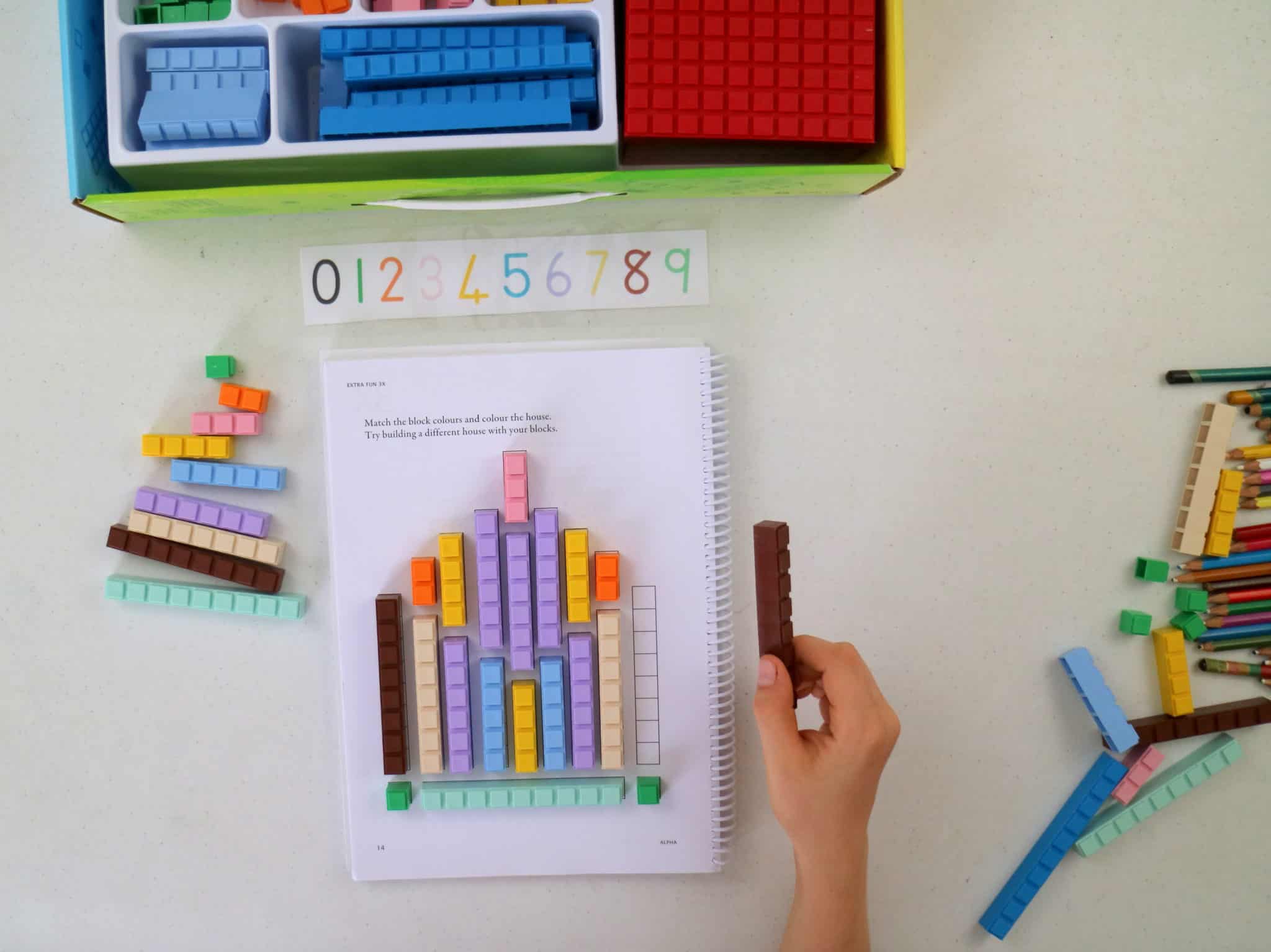
What is maths anxiety and who does it affect?
For many students, mathematics is more than just a chore. It’s a source of overwhelming stress and constant dread that’s to be avoided at all costs. That’s because maths anxiety is a legitimate condition. It has long-term consequences for learning, and it doesn’t disappear with age.
As with anything new, students may struggle with learning the fundamentals of maths. The difficulty of learning even basic concepts can lead to feeling overwhelmed. Those feelings can compound and manifest both psychologically and physically. They can cause headaches, issues with concentration, memory strain, and feeling anxious. Maths anxiety can cause children to experience delay in mastering the basics and continue to affect their general understanding of maths.
However, there are specific steps that you can take to alleviate your child’s anxiety and develop a positive attitude toward maths. It starts with how maths is being taught and includes using specific hands-on tools for learning maths concepts.
Why is maths a hard subject?
If you've never been taught to ride a bike and someone told you how to ride, would you know what to do just from their description of the action? Even if their description was very detailed and intricate? No, it would probably just confuse you more.
This is often the case with maths. Students are shown numbers and given formulas of how to use that number when adding , multiplying, doing fractions and algebra. They are asked to then "practice" what they've learnt and pass tests on that knowledge.
However, a crucial step is missing. How can a student know what those numbers are if they haven't touched, felt or seen those numbers? It's the same as riding a bike. You need a bike and you need to jump on it and ride down the hill before you know you've got handlebars, brakes and pedals.
Often, this confusion of just teaching numbers and formulas (without any understanding or hands-on components) is very tricky for those with learning differences, dyslexia and dyscalculia. While other students may struggle with the more advanced concepts, those with learning differences just stop altogether. It's too hard and it doesn't make sense to them - and rightly so!
Is it the problem with the students or the way we teach them?
If your student is drastically failing maths and experiences maths anxiety, the first place to start is to determine the effectiveness of the methods we are using to teach them.
In conventional schools and standard learning centres, maths is introduced as an abstract concept. Students are required to learn the number off by rote, answer questions competently and pass exams with good marks.
But most of the time, that doesn't happen. Students struggle with learning basic maths concepts, like Place Value, and are still finger counting. They experience dreadful maths anxiety and fail to perform at the expected standard, thus creating further pressure and overload for the student.
How do we fix that for the student? I suggest we change the way we are teaching them. When we start with the concrete, hands-on aspects of introducing numbers to our student, the lightbulb turns on and they become much more confident in maths. Why? Because they really understand the concepts and the way to use numbers.
This approach is called the "hands-on" teaching approach. It's the way we learn all other things in life - we touch a dog, see a dog, feel a dog and then learn the word "dog". In order to teach maths effectively, we must do the same.
How do you teach students effectively?
For any student, if maths is taught with hands-on, multisensory methods and tools, they will be able to understand the concepts on a much deeper level. The student will be able to touch, see and feel that the number 2 is orange and it has two scored marks on it, the number 3 is pink and has three scored marks on it, and together they are equal to (or the same length as) the number 5, which is light blue.

The specific colours and the scored marks on each block makes it much easier for the student to identify these numbers. They become more engaged, more confident and achieve better results simply because they understand what they are doing! It's so simple, and yet maths as a subject is so easily missed!

It also works for showing larger numbers, multiplication, algebra, decimals and percents. We use the same manipulatives all the way from Primary school to High school maths - because they work so well! For teaching fractions, we have specific hands-on Fraction Overlays that show the concepts easily to students.
Using these concrete manipulatives all the way through a student's education, we can see much better maths results across the board. By using this hands-on teaching approach and research-proven CRA methodology, students understand maths, achieve better results, become more confident and are much more at ease with maths.
What methods work best for teaching students?
Research shows that, based on the 2012 PISA data, maths anxiety is a reality for 33% of 15-year old students.
It is mostly predominantly in the way we teach that causes children to disengage and develop maths anxiety. When children understand what they are being taught and feel good at it, they will be willing to learn. Even in low attendance schools with children who come from trauma-based backgrounds we have seen an increase in attendance, more confidence and better results in maths.
The answer for teaching effective maths lies in the research-based recommendations which are designed to help students of all ages, abilities and backgrounds successfully master maths.
This includes the following components (and these are all included in every step of the Math-U-See program):
"CRA Methodology" is pretty much a shortened way of saying "let your student learn the concrete concept before asking them to confirm their abstract understanding." It means, like the earlier analogy of riding a bike, that you let your student ride a bike. Instead of telling them what they should do and how they should do it without any tactile knowledge, you allow them to engage and understand what they're being taught.

This method of teaching can be used in any subject, but is most often linked to maths because, ironically, maths is one of the main subjects that are not being taught in a hands-on way. Weird, huh?
We teach English and language in a multisensory way, especially with out kids. We say "dog", we show them what a dog looks like and we let them touch the warm fur of the animal. We show them Mum, Dad, bus, and road. We show them cars and why it's important to look both ways before crossing the road. We are constantly teaching language in a multisensory way so our children understand what we are saying - we HAVE to, otherwise they won't be able to understand us!
So why isn't it the same with maths? Why do we assume that teaching numbers will somehow work without the tactile approach? Maths is a language too, and needs to be taught in the same ways that work.
What about those with learning differences?
What about students with learning differences and special needs? Does this approach of hands-on teaching also work for them?
The answer is yes! We have already had hundreds of schools, tutors, carers, intervention specialists and parents use the Math-U-See program for excellent results for students with learning differences.
Let's look at the definitions of two key types of learning differences:
Dyslexia
Noun.
Meaning: a general term for disorders that involve difficulty in learning to read or interpret words, letters, and other symbols, but that do not affect general intelligence.
Statistics say that as many as one in five kids has dyslexia, and that 80 to 90 percent of kids with learning disorders have it.
This is a massive percentage of students that are currently being taught by parents and teachers across Australia!
Dsycalculia
Noun.
Meaning: severe difficulty in making arithmetical calculations, as a result of brain disorder.
Though research on prevalence is limited, it's estimated that between 5 and 7% of elementary school aged children may have dyscalculia. However, this is often much more common than people think.
Looking at these basic definitions without going into the whole spectrum of learning differences, you can see that the student's brain is not grasping arithmetical concepts the "abstract" way that is being taught in schools and standard learning centres. The students don't understand numbers and where they should be (what is the Place Value of that number?) and how that number should be used (multiply, add, subtract, or divide).
And that is precisely my point.
Specific for parents and teachers
For parents, especially those who hated maths class in school and dread teaching the subject, maths becomes much easier. Using our specialised maths program and specific instructions in the teaching manual, you understand each topic explicitly before you teach. You have extensive video content that shows you what to do, and by using the hands-on manipulatives, you can show your kids exactly what you mean by "3+3=5."
For teachers, using hands-on manipualtives make it much easier to teach because you can show your students each maths concept in a hands-on way. Instead of writing down numbers (the abstract phase), you can start at the concrete phase by using the magnetic blocks on the whiteboard. This way, you can walk individual students and entire classrooms through maths in a multisensory way. You'll get much happier and more engaged students, guaranteed!
And so, in simple ways that are easy for any parent or teacher to use, we are using the research-proven CRA Methodology. This means we are taking something from Concrete to Representational to Abstract.
This method of teaching has been proven by thousands of students to work, including those with learning differences such as dyslexia, dyscalculia, ADD and so on. It works because it shows the students what they are working with in a tactile way.
There's also some more specific things you can do to reduce your student's maths anxiety. Even those learning differences make a big impact on maths anxiety, many times it's not the case - maths just hasn't been explained properly!
Here's 5 steps to help students with maths anxiety:
5 Steps to Manage Maths Anxiety
1. Practice makes perfect
Allow your student to perfect the basics with practice. If you can recall when the changes in your student’s anxiety began, that is a great place to start. Revisit the concepts that were being taught during that time, as well as any other concepts learned previously. Listen and pay attention to what may have been causing the anxiety. Allow them to repeat the concepts and practice as much as they need to before attempting to proceed to another topic. This creates a solid foundation to build upon for more advanced concepts.
2. Reduce stress from tests
Design a test-taking strategy, tailor-made for your student. Testing has been known to create anxiety for students of all ages. Encountering a question or several that they don’t know the answer to can make children feel anxious, especially if they think they are unable to proceed. Communicate that it is okay to skip questions and revisit them. This will prevent them from dwelling on potential mistakes that may prevent them from moving forward. Learn from them what would make them more comfortable about taking tests and implement those changes accordingly.
3. Change their mindset
Anxiety in any form exists in the mind. When anyone feels anxious, our first thought is to tell them to relax. If math is creating anxiety. how does one relax from the subject? You need to guide them in changing their mindset. Students need to understand that mistakes will happen. It’s easy to become a perfectionist, even as children. Learning early in life that mistakes are apart of the journey can save them trouble long term. Encourage your student to write down their struggles so that you may discuss them.
4. Show them maths in real-life
For Parents:
I was not a huge fan of maths when I started school. Why? Because I couldn’t connect it to my life. When you’re a child, you’re unaware of how most things will fit into your life. Help your student make the connection between math and how it relates to them in the real world. Consider using money as a tool. Money is a tangible way to show a child the basics of math. You can physically move it, add it and subtract it. Not to mention the added bonus of introducing financial math to your child at an early age. Try role-playing with your child with you as the customer and them as the cashier.
For teachers:
Find a way that works best for your student to connect maths and their life. Show them around the classroom and use telling time, counting up their test scores, determining the class average, checking weights and measurements, going outside the classroom and measuring angles as a way of introducing them to maths off the workbooks.
5. Choose a program that supports their learning style
Part of your student’s anxiety may be that the style of teaching isn’t aligned with their style of learning. Some students are visual learners, where they need to see illustrations to connect their thoughts. Other students may work better independently through reading the text and then trying to solve problems. Talk to your student and ask what works best for them. You may not need to do a full overhaul in your instruction but simply add supplemental techniques that cater to your student's style of learning.
The Math-U-See program teaches specifically with a hands-on, multisensory approach. There's also a whole program behind the manipulatives that teach using explicit instruction, online video content, student workbooks and end-of-lesson tests to support a mastery-based approach to maths.
You can find out more about our specialised maths program and the way we teach maths from Primary to High school and University level education here.
Need some extra support to teach maths?
For Parents:
Upskilling your knowledge and confidence in teaching is another key to success. If you don't have experience as a maths teacher (most of us don't!) you can join us for our Online Parent Training workshops, which give you the tools, resources and support you need to teach your kids in a better way.
For Teachers:
By learning specific methods and how to use them when teaching maths, you will engage and create confident students who are eager to learn! If your students understand numbers and the way they are being taught, they will automatically achieve better results!
You can check out the Online and In-person Trainings here:
If you have any questions, feel free to contact us here or leave your comments below
Hope that helps,
The Team at Maths Australia

